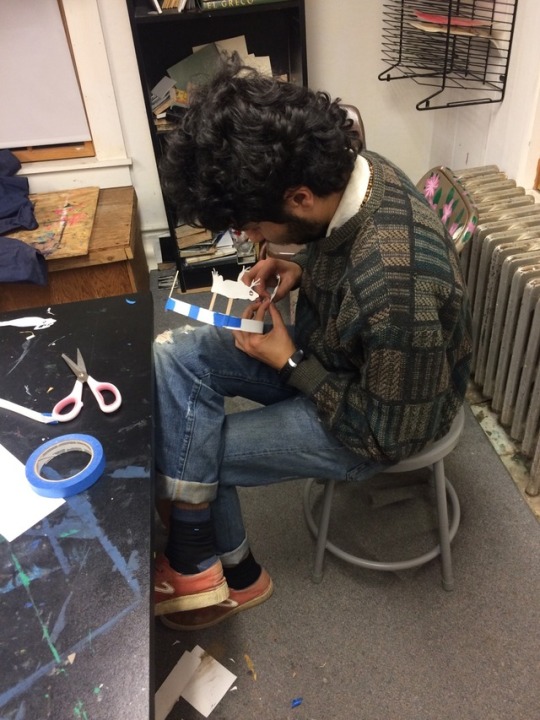Photo
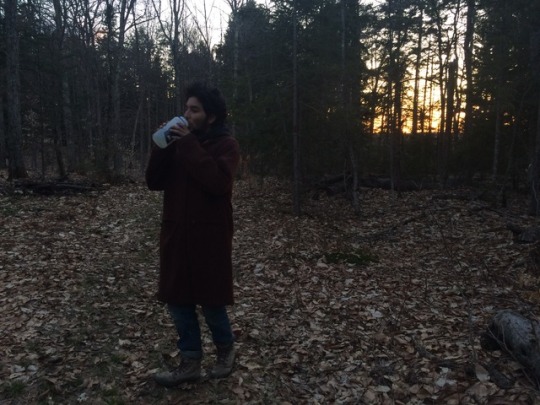
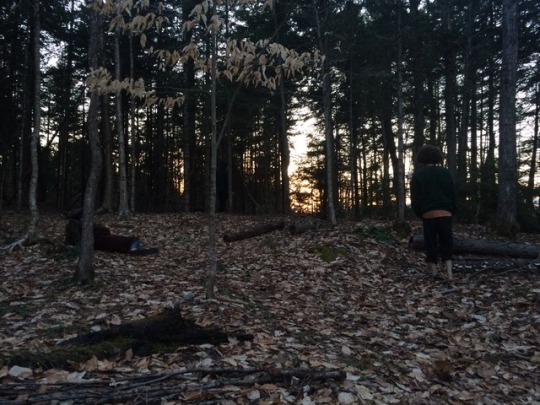
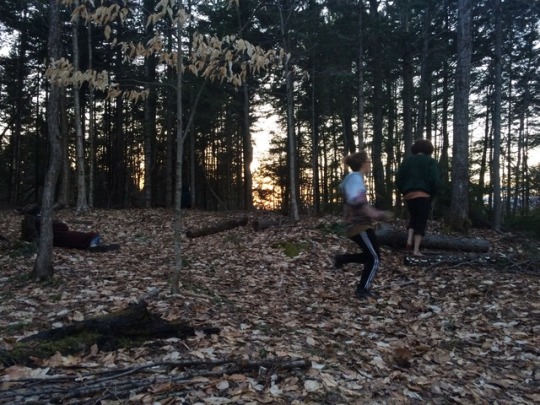
Soundwalk in Virginia Russell Woodlot. 4/23/17
3 notes
·
View notes
Text
A Study in Sonological Competence
For my Performance Ecology final I decided to change my focus from a visual project to an aural one. Visual modality is incredibly dominant in today’s society (R. Murray Schafer). An antidote to this problem is to develop a range of exercises such as sound walks, to maintain a high level of sonic awareness. This is what my project focused on. My essential question came out of an article about acoustic ecology by Kendall Wrightson: how does sonological incompetence hinder our ability to listen deeply to ourselves and those around us? Another antidote to this problem would foster a new approach to design as a result of imbuing us with an appreciation of environmental sound. The new approach to design should incorporate that appreciation, then reducing wasted energy that noise represents (Wrightson).
I think that all too often, we walk around with our ears shut -- if we walk around at all. A true state of listening cannot be forced, it’s just a gentle receptiveness. Listening implies a readiness for the unexpected while it grounds you in place. Without the ecological music of the place you’re inhabiting, you can become eerily ungrounded. Where is this sound proof classroom? It could be anywhere in the world … Where are the ecological sounds to mark it geographically? When we are cut off from the sounds of the natural world, it inhibits our ability to actively and deeply listen to each other. A deeper appreciation of the sounds of the natural world is required to bridge this gap. When asked the other day for 5 ecological sounds that I had heard that morning, I could only come up with 2. Though that might have been partly because of the weather (freezing rain, howling wind, general Vermont wintry unpleasantness), I also likely wasn’t listening as I walked along. I want to become in the habit of listening and invite others to join me.
I have gone on multiple solo soundwalks and one with four other people. On the evening of Sunday the 23rd of April, Jacob, Savannah, Chris, and Victoria and I went to the Virginia Russell woodlot to hear what we could hear. We left around 7:30 and spent about an hour in the woods, walking and then sitting to listen. We interestingly enough chose to sit right at the edge of where the mixed hardwood forest gives way to softwoods. The most notable sound for me was the birdsong we heard. According to Laura Beebe, it was either a Winter Wren or a Hermit Thrush (likely the latter). The song was very melodic and complex and was the foremost player in the soundscape. The next most prominent noise was the droning hum of the peepers and amphibians singing, one of my most treasured harbingers of spring, sun, and warmth. These sounds both brought me comfort and allowed me to focus on listening outwards. I didn’t really listen in to myself very much. I found it more meditative and helpful to focus on the sounds around me. I heard a lot of noise from passing cars on the road that made me feel anxious and a bit annoyed. They’re just so loud! One of my favored sounds from the experience was the wicked way the tired and bleached leaves of the Beech tree sounded when a breeze came through the canopy. It sounded almost like a zipper being unzipped. It was eerie and exciting. After sitting and listening for about half an hour, we had a brief circle up with an informal reflection on what we experienced. That audio is recorded in my playlist.
The cycles of the natural soundscape of the west coast of British Columbia showing the relative level of sounds in 1984 is pictured below. If I had more time I would have loved to record more audio, visiting different areas of the NEK with different people at different times of the day, to make such a soundscape diagram over the course of a year or at least 6 months.

I would also be interested to collect some endangered sounds of Vermont, which was a project originally done in the UK by Dr. John Drever, a professor of Acoustic Ecology at a London University. Some of the endangered sounds of the UK included the typewriter, slam door trains, newsvendors’ cries, traditional woodcutting, etc.
Notes from Wrightson reading:
-Unfortunately, since the Industrial Revolution, an ever increasing number of unique soundscapes have disappeared completely into the cloud of homogenized, anonymous noise that is a contemporary city soundscape. The preindustrial soundscape could extend for many miles. Thus, sounds emanating from the listener's own community may have been heard at a considerable distance, reinforcing a sense of space and position and maintaining a relationship with Home. The sense is further strengthened when it is possible to hear sounds ensnaring from adjacent settlements, establishing and maintaining relationships between local communities. In a post industrial soundscape meaningful sound can be masked to such an extent that an individual’s “aural space” is reduced. Where the effect is so pronounced that an individual can no longer hear the reflected sound of their own movement or speech, aural space has effectively shrunk to include the individual, isolating the listener from the environment. The pre-industrial soundscape is balanced in terms of level, spectra and rhythm. The post industrial soundscape features an almost constant level creating a “sound wall”, which isolates the listener from the environment. Due to the 24 hour society, the rhythms of daily routine are, in some localities, significantly eroded. Sound needs to be the mediator between listener and environment.
-As the soundscape deteriorates, so awareness of the subtleties of environmental sound has withered in proportion. as a result, the meaning sounds hold for the listener in contemporary soundscapes tends to be polarized into extremes, like loud and quiet, or good or bad. Compare this level of sonic awareness with the Kaluli men of Papa New Guinea who, according to Feld, can “imitate the sound of at least 100 birds, but if you can provide visual descriptive information on nearly that many.”
-Networks, transmitters, and satellites extend the acoustic community across the entire planet, a fact that has been utilized for fair deeds and foul Schafer refers to latter use of sound as “sound imperialism”.
-The psychological significance of sound used as a controlling force is that the environment and the community become the enemy. As with any war, the environment becomes a battleground and suffers as much as it inhabitants. Schafer estimated that the battle between sonic expression in control was helping to increase environmental sound levels annually.
-The use of sound as a sound wall to block the unceasing inner dialogue and uncomfortable emotions the dialogue evinces provides illusion of mastery over emotion. The psychological and physical cost of an unexpressed emotion is an epidemic of stress related illnesses that reflect a struggle to adapt to a new way of living.
-As the city represents excitement, so the countryside has come for many to represent boredom and a disconnection from life. “Life” has become associated with continuous noise and activity. Being “in touch” with the noise of opinion and technology becomes more valuable, well the quiet reality of how an individual feels can be devalued or ignored … the pre industrial soundscape represents a deep psychological fear for anyone whose purpose is to avoid their feelings. Being quiet tends to bring emotions to the surface.
1 note
·
View note
Photo
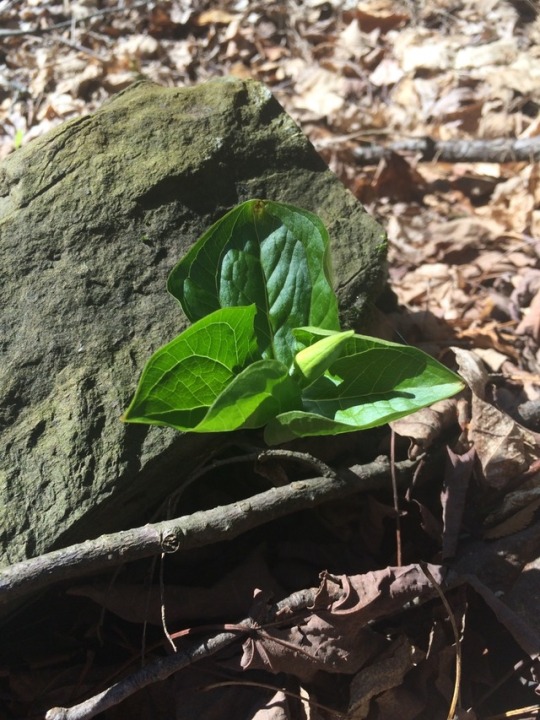
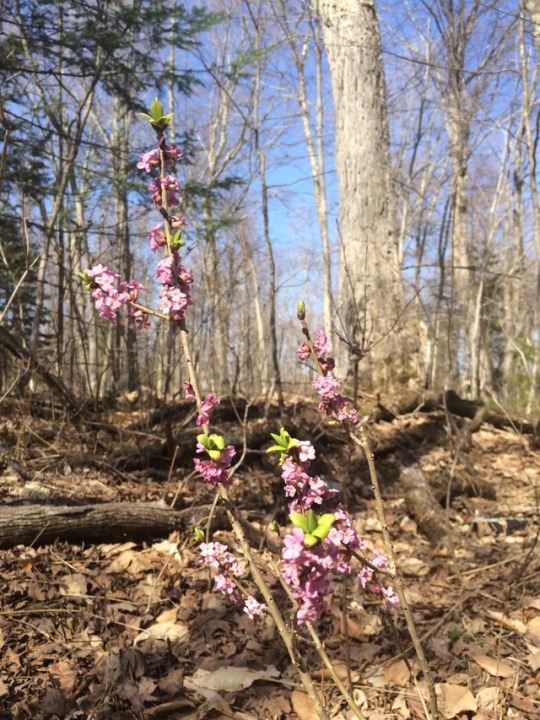

everything coming up ramps!
0 notes
Text
Puppet show reflection
The process of working in a group is a skill I have yet to hone. My plan was to work with Chris for this project, and Jes asked if she could join us. I agreed although reluctantly. Nothing against her, but we have usually worked together for our projects this semester and it’s been somewhat difficult in the past to coordinate schedules and ambition. We first worked on the puppets during the scheduled hours of the study social. I was grumpy and stressed about other work and found it hard to focus with people talking, singing, and jumping in. Our puppets were not out best effort and we had trouble creating them, probably because we didn’t have a story line yet. We got together again in the art space and pulled up the poem I had wanted to work with. We changed it a little to suit our needs and began to work on puppets. Chris did most of the work, but Jes and I contributed a lot also. We worked for about an hour and a half. We then came together a few nights later to put the show together. We had to improvise a curtain because the one we had didn’t work. We were in common house and Zac was there playing piano. He started play unexpectedly and it turned out to work really well with our frog creation story.
The performance itself was not exactly what I expected. I have very high expectations for myself and generally end up failing myself. I had seen the West of Roan shadow puppet show a few months ago and wanted something that was as polished and well done. But our performance was uniquely our own, and I still think it came out really well, even if it wasn’t flawless. Going to Bread and Puppet was really helpful because Linda kept talking about the expressiveness of the puppet. Though our characters didn’t speak and I narrated in an omniscient way, I think the puppets were still able to expression creation really well. All in all, the project challenged me in the way these projects have been over the semester. To let go of prior expectations and just enjoy the process, and to not be so fixated on a perfect ending.
1 note
·
View note
Photo


divinity. listen. 4/23/17
0 notes
Photo

What my body's doing. 4/18/17.
1 note
·
View note
Photo
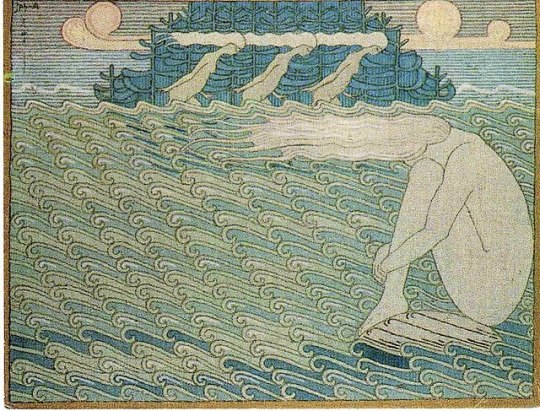
The Kalevala, a 19th-century work of epic poetry compiled by Elias Lönnrot from Karelian and Finnish oral folklore and mythology.
14 notes
·
View notes
Text
From the Bottom of the Pond
In the beginning there was nothing, nor was anything lacking.
The Frog was not yet created. We pick up the cosmic brush and create the
scene. The landscape, the wind whipping water into waves.
Everything then depends upon the stroke of the Frog leg.
Our Frog lets the good earth lead it,
Just as our brush allows our hand to move it.
Take any direction, roam the world to its farthest edge.
All comes back to where it started… to blessed Emptiness.
–Bianca Caputo, Christopher Estrada, Jes Scribner, with respects to Hsu Yun and the original poem.
2 notes
·
View notes
Text
Original poem for puppet script
In the beginning there was nothing, nor was anything lacking.
The paper was blank. We pick up the paint brush and create the
scene. The landscape, the wind whipping water into waves.
Everything depends upon the stroke of our brush.
Our Ox lets the good earth lead it,
Just as our brush allows our hand to move it.
Take any direction, roam the world to its farthest edge.
All comes back to where it started… to blessed Emptiness.
--Hsu Yun.
(image: Gao Xingjian)
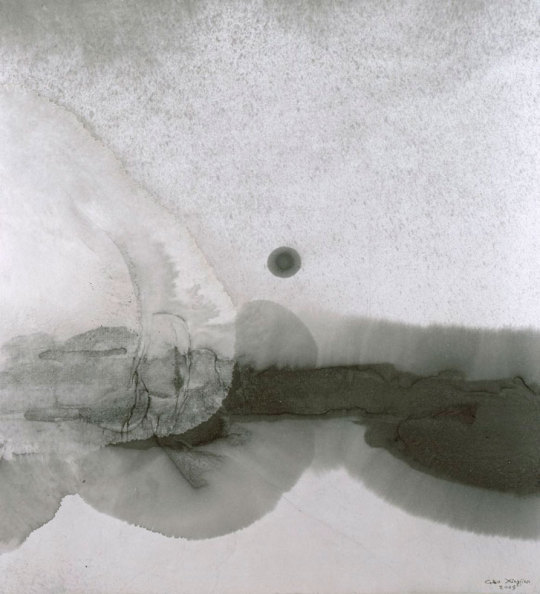
1 note
·
View note
Photo
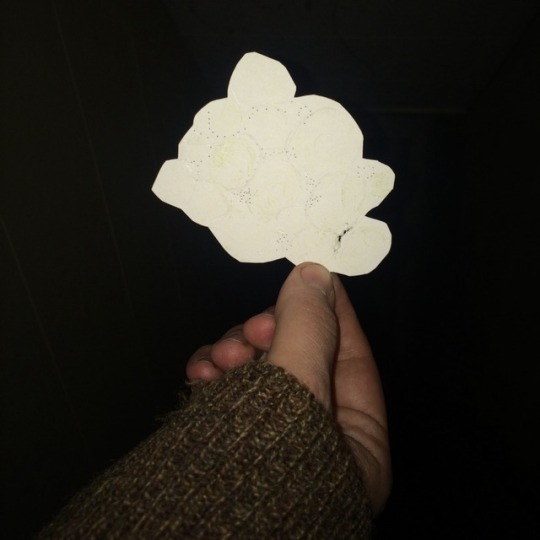
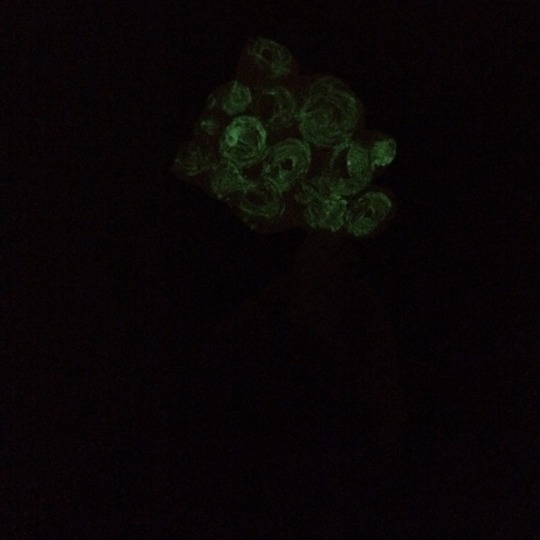
Puppet making process: glow in the dark tadpole eggs!
#puppetry#puppet making#shadow puppets#tadpole eggs#glow in the dark#performance#performance ecology#creation stories
0 notes
Photo

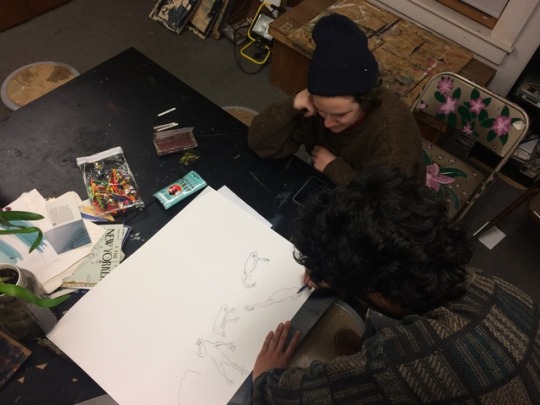
Puppet-making process.
0 notes
Photo
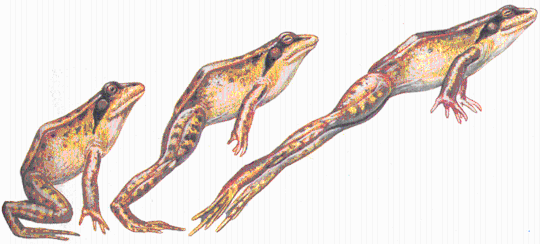
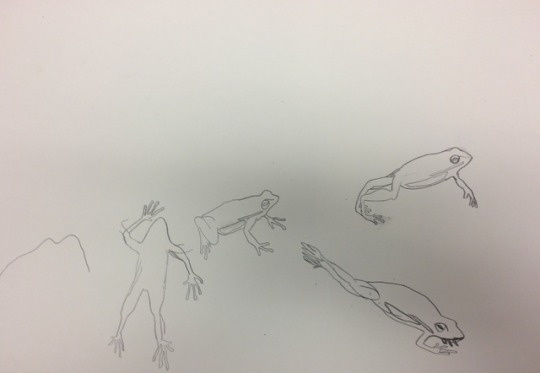
Frog puppet show - inspiration and sketch.
0 notes
Text
Unsettling Eco-Scapes: Aesthetic Performances for Sustainable Futures
Emerging sustainability culture offers new perspectives on creative spatial practice.
The future eco-scape is not necessarily a sphere where you feel ‘at ease’, but a performative and unsettled space in constant transformation and change.
Increasing landscape awareness as a result of climate change. Sustainable, long term, and organic urban development abounds (somehow). Energy flows, waste handling, biodiversity, and human/wildlife coexistence are not only present but conspicuous in these areas. It’s more than a soothing ornament of industrialization.
What can human creativity bring to the biosphere? How can is human imagination, and what is it good for? Deep ecologists criticize the privilege of human agency, while emphasizing the non-hierarchical interconnectedness of all living creatures. These concepts disqualify the anthropocentrism implied in ideas like “creativity” or “development”.
The idea of aesthetic pleasure coming with the experience of logical fulfillment is influential, and doesn’t fortify the conception of nature as true beauty. It also turns the aesthetic experience into an intrinsically personal matter... leading to splendid isolation.
Art no longer a reflection of harmonious ideas but an intervention into the “physical abyss of raw matter” (Smithson).
Symbolic aspects of urban microclimate artworks are still important but they also operate on different dimensions -- intervening with and actualizing territorial aspects.
A source of inspiration for a vitalist approach to environmental aesthetics is the ‘transformism’ of Henri Bergson, who argued that the ontological point of departure was the conviction that life, as a natural, complex system, cannot be ethically grounded ... life is fundamentally transitory, and unsustainable ... it is a perpetual becoming. It revolves around agency as the use of unbound energy, not a single purpose or ideal.
Why are these ideas important now? They always have been. A beautiful landscape works on our psyche, performing a continuous therapeutic restoration of our mental connections to the biophysical world (Meyer 2008). It[s not about defending beauty but preventing the concept of sustainability from slipping into the recesses of state and corporate political power, becoming hijacked by the ruling regimes.
#journal of landscape architecture#performance ecology#deep ecoclogy#sustainability#aesthetic performances#ecoscapes#maria hellstrom reimer#creative spatial practice
1 note
·
View note
Quote
I am told by many of you that I must forgive and so I shall after an Indian woman puts her shoulder to the Grand Coulee Dam and topples it. I am told by many of you that I must forgive and so I shall after the floodwaters burst each successive dam downriver from the Grand Coulee. I am told by many of you that I must forgive and so I shall after the floodwaters find their way to the mouth of the Columbia River as it enters the Pacific and causes all of it to rise. I am told by many of you that I must forgive and so I shall after the first drop of floodwater is swallowed by that salmon waiting in the Pacific. I am told by many of you that I must forgive and so I shall after that salmon swims upstream, through the mouth of the Columbia and then past the flooded cities, broken dams and abandoned reactors of Hanford. I am told by many of you that I must forgive and so I shall after that salmon swims through the mouth of the Spokane River as it meets the Columbia, then upstream, until it arrives in the shallows of a secret bay on the reservation where I wait alone. I am told by many of you that I must forgive and so I shall after that salmon leaps into the night air above the water, throws a lightning bolt at the brush near my feet, and starts the fire which will lead all of the lost Indians home. I am told by many of you that I must forgive and so I shall after we Indians have gathered around the fire with that salmon who has three stories it must tell before sunrise: one story will teach us how to pray; another story will make us laugh for hours; the third story will give us reason to dance. I am told by many of you that I must forgive and so I shall when I am dancing with my tribe during the powwow at the end of the world.
“The Powwow at the End of the World”, Sherman Alexie, 1996
#poetry#poem#sherman alexie#powwow#the powwow at the end of the world#performance ecology#ecology#ecological justice
8 notes
·
View notes
Video
Sound walk #1: solo. 4/12/17. Forgive the quality. This creaky tree made me smile.
0 notes
Photo
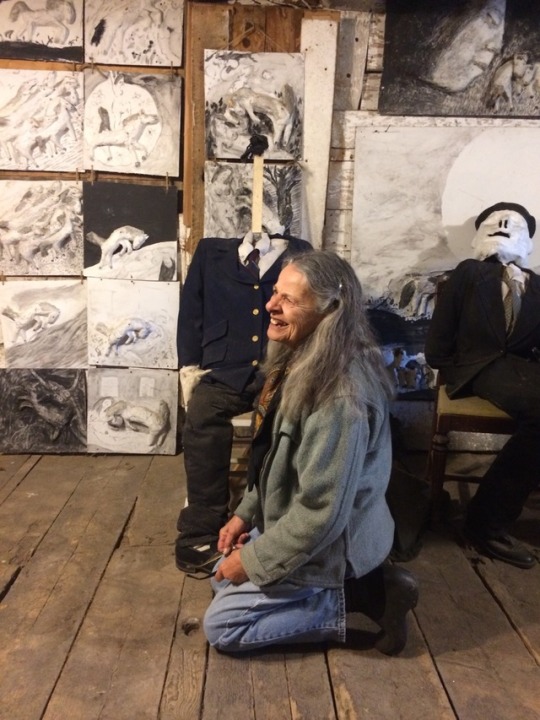

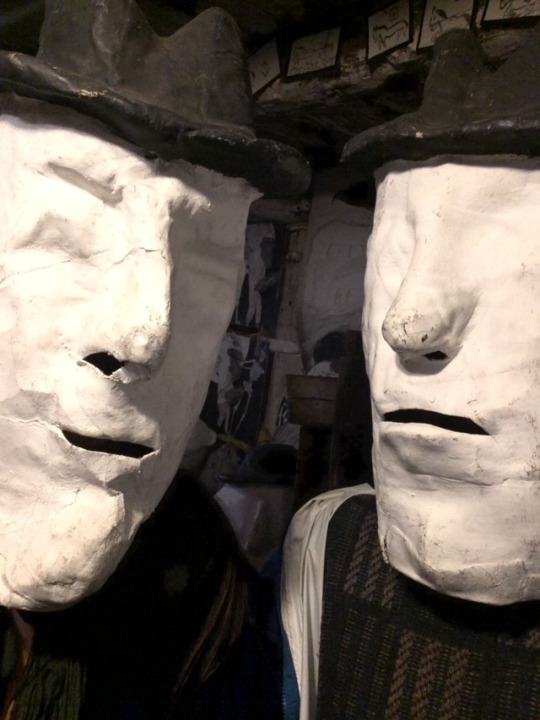
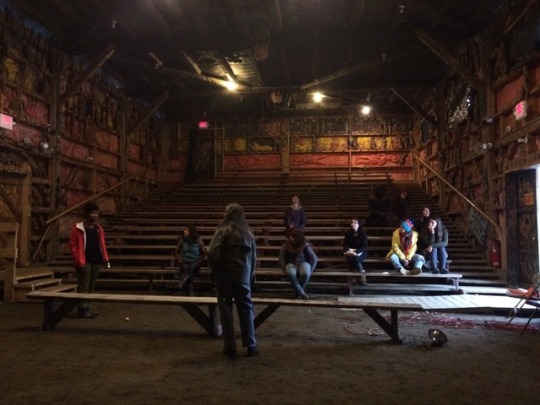
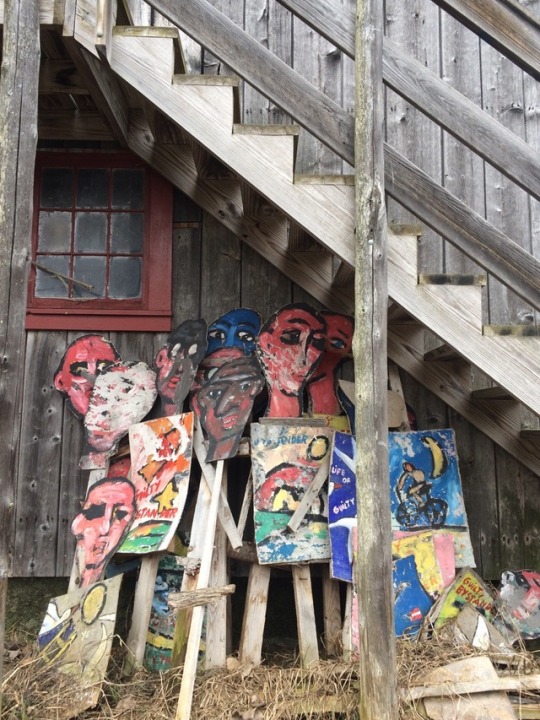
bread & puppet, 4/12/17
3 notes
·
View notes

